
True Grit is a 1969 American Western film directed by Henry Hathaway, starring John Wayne as U.S. Marshal Rooster Cogburn, Glen Campbell as La Boeuf and Kim Darby as Mattie Ross. It is the first film adaptation of Charles Portis' 1968 novel of the same name. The screenplay was written by Marguerite Roberts. Wayne won an Oscar for his performance in the film and reprised his character for the 1975 sequel Rooster Cogburn.

A gentleman thief, gentleman burglar, lady thief, or phantom thief is a stock character in fiction. A gentleman or lady thief is characterised by impeccable manners, charm, courteousness, and the avoidance of physical force or intimidation to steal, and often has inherited wealth. They steal not only to gain material wealth but also for the thrill of the act itself, which is often combined in fiction with correcting a moral wrong, selecting wealthy targets, or stealing only particularly rare or challenging objects.
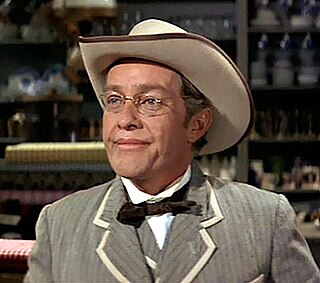
Strother Douglas Martin Jr. was an American character actor who often appeared in support of John Wayne and Paul Newman and in Western films directed by John Ford and Sam Peckinpah. Among Martin's memorable performances is his portrayal of the warden or "captain" of a state prison camp in the 1967 film Cool Hand Luke, in which he utters the line, "What we've got here is failure to communicate." The line is number 11 on the American Film Institute list of 100 Years...100 Movie Quotes.

The Frisco Kid is a 1979 American Western comedy film directed by Robert Aldrich, starring Gene Wilder as Avram Belinski, a Polish rabbi who is traveling to San Francisco, and Harrison Ford as a bank robber who befriends him.

Harold Brent Wallis was an American film producer. He is best known for producing Casablanca (1942), The Adventures of Robin Hood (1938), and True Grit (1969), along with many other major films for Warner Bros. featuring such film stars as Humphrey Bogart, John Wayne, Bette Davis, and Errol Flynn. As a producer, he received 19 nominations for the Academy Award for Best Picture.

Martha Hyer was an American actress who played Gwen French in Some Came Running (1958), for which she was nominated for the Academy Award for Best Supporting Actress. Her autobiography, Finding My Way: A Hollywood Memoir, was published in 1990.

El Dorado is a 1966 American Western film directed and produced by Howard Hawks and starring John Wayne and Robert Mitchum. Written by Leigh Brackett and loosely based on the novel The Stars in Their Courses by Harry Brown, the film is about a gunfighter who comes to the aid of an old friend who is a drunken sheriff struggling to defend a rancher and his family against another rancher trying to steal their water. The supporting cast features James Caan, Charlene Holt, Paul Fix, Arthur Hunnicutt, Michele Carey, R. G. Armstrong, Ed Asner, Christopher George, Adam Roarke and Jim Davis.

Henry Hathaway was an American film director and producer. He is best known as a director of Westerns, especially starring Randolph Scott and John Wayne. He directed Gary Cooper in seven films.

John Herrick McIntire was an American character actor who appeared in 65 theatrical films and many television series. McIntire is well known for having replaced Ward Bond, upon Bond's sudden death in November 1960, as the star of NBC's Wagon Train. He played Christopher Hale, the leader of the wagon train from early 1961 to the series' end in 1965. He also replaced Charles Bickford, upon Bickford's death in 1967, as ranch owner Clay Grainger on NBC's The Virginian for four seasons.

The Shootist is a 1976 American Western film directed by Don Siegel and based on Glendon Swarthout's 1975 novel of the same name, and written by Miles Hood Swarthout and Scott Hale. The film stars John Wayne in his last film appearance before his death in 1979, Lauren Bacall, Ron Howard, James Stewart, Richard Boone, John Carradine, Scatman Crothers, Richard Lenz, Harry Morgan, Sheree North and Hugh O'Brian.

Sunriver is a census-designated place and 3,300-acre (13 km2) planned residential and resort community in Deschutes County, Oregon, United States. As of the 2010 census it had a population of 1,393. It is part of the Bend Metropolitan Statistical Area, located on the eastern side of the Deschutes River, about fifteen miles (25 km) south of Bend at the base of the Cascade Range.

Charles McColl Portis was an American author best known for his novels Norwood (1966) and the classic Western True Grit (1968). Both Norwood and True Grit were adapted as films, released in 1970 and 1969, respectively. True Grit also inspired a film sequel and a made-for-TV movie sequel. The second film adaptation of True Grit was released in 2010.
Akiji Kobayashi, sometimes credited as Shōji Kobayashi, was a Japanese actor. He attended Nihon University College of Art, but withdrew before completing his degree and joined the Haiyuza Theatre Company in 1949. He made his film debut with Satsujin Yogisha in 1952.

True Grit is a 1968 novel by Charles Portis that was first published as a 1968 serial within The Saturday Evening Post. The novel is told from the perspective of a woman named Mattie Ross, who recounts the time when she was 14 and sought retribution for the murder of her father by a scoundrel, Tom Chaney. It is considered by some critics to be "one of the great American novels." True Grit is included in the Library of America of Portis' Collected Works.

Reuben J. "Rooster" Cogburn is a fictional character who first appeared in the 1968 Charles Portis novel True Grit.
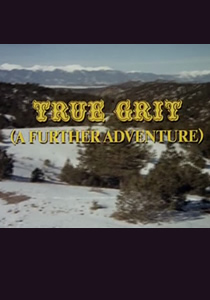
True Grit: A Further Adventure is a 1978 American Western television film directed by Richard T. Heffron. It is the sequel Rooster Cogburn (1975), and the third installment in the True Grit film series. While John Wayne portrays Rooster Cogburn in the first two films, Warren Oates takes over the role in this 1978 TV version. Lisa Pelikan portrays Mattie Ross, played in the first film by Kim Darby. The supporting cast features Lee Meriwether and Parley Baer.
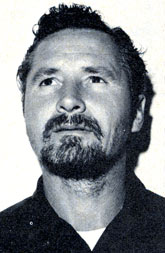
Charles Bert Hayward was an American motion picture stuntman and actor. He was associated particularly with the films of John Wayne. He doubled for most of the great Western and action stars of the 1950s-1980s.
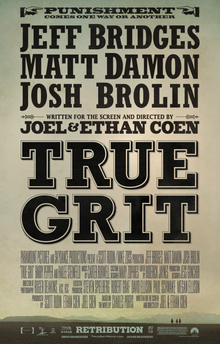
True Grit is a 2010 American Western film directed, written, produced, and edited by Joel Coen and Ethan Coen. It is an adaptation of Charles Portis' 1968 novel of the same name, starring Jeff Bridges as Deputy U.S. Marshal Reuben J. "Rooster" Cogburn and Hailee Steinfeld as Mattie Ross. The film also stars Matt Damon, Josh Brolin, and Barry Pepper. It is the fourth installment overall in the film series of the same name, and a reimagining of the 1969 previous film adaptation which starred John Wayne, Kim Darby, and Glen Campbell.
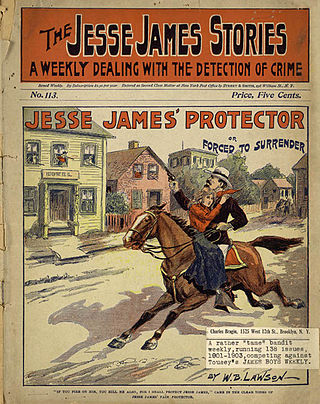
Cultural depictions of Jesse James appear in various types of media, including literature, video games, comics, music, stage productions, films, television, and radio. James is variously described as an American outlaw, bank and train robber, guerrilla, and leader of the James–Younger Gang. After the American civil war, as members of various gangs of outlaws, Jesse and Frank James robbed banks, stagecoaches, and trains across the Midwest, gaining national fame and even sympathy despite their crimes. James became an iconic figure from the era, and his life has been dramatized and memorialized numerous times.

The True Grit film series consists of American western dramas, including theatrical and made-for-television installments. The plot follows the adventures of Reuben J. "Rooster" Cogburn in the Old American West, and detail his role in bringing justice to outlaws and bandits who wrongfully terrorize small towns and villages. Each movie includes his voyages with women he is tasked with protecting, despite his apprehensions.



















